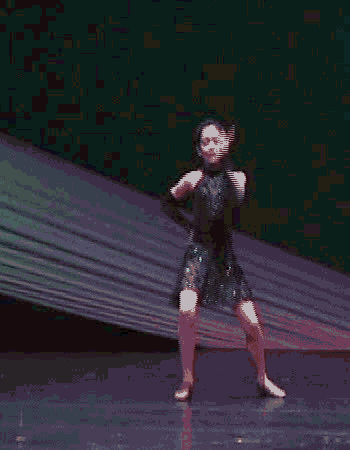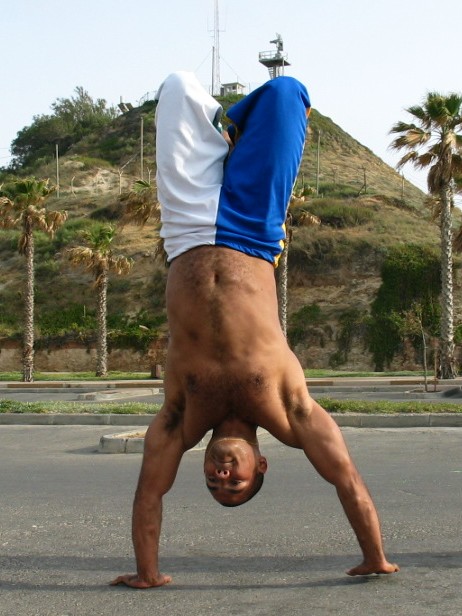|
Balance Beam
The balance beam is a rectangular artistic gymnastics apparatus and an event performed using the apparatus. The apparatus and the event are sometimes simply called "beam". The English abbreviation for the event in gymnastics scoring is BB. The balance beam is performed competitively only by female gymnasts. The Apparatus The beam is a small, thin beam that is typically raised from the floor on a leg or stand at both ends. It is usually covered with leather-like material and is only four inches wide. Balance beams used in international gymnastics competitions must conform to the guidelines and specifications set forth by the International Gymnastics Federation ''Apparatus Norms'' brochure. Several companies manufacture and sell beams, including AAI (USA), Janssen-Fritsen (Europe) and Acromat (Australia). Most gymnastics schools purchase and use balance beams that meet the FIG's standards, but some may also use beams with carpeted surfaces for practice situations. While learning n ... [...More Info...] [...Related Items...] OR: [Wikipedia] [Google] [Baidu] |
Code Of Points (artistic Gymnastics)
The ''Code of Points'' is a rulebook that defines the scoring system for each level of competition in gymnastics. There is not a universal international ''Code of Points'', and every oversight organization — such as the FIG (Fédération Internationale de Gymnastique), NCAA Gymnastics, and most national gymnastics federations — designs and employs its own different ''Code of Points''. The FIG Code of Points The FIG Code of Points is defined in a public document provided by the Federation. Gymnasts competing at lower levels or outside the FIG's jurisdiction (e.g., NCAA gymnastics and local club teams) may not be scored according to the FIG code. 2006 Revised Code In 2006, the ''Code of Points'' and the entire gymnastics scoring system were completely overhauled. The change stemmed from the judging controversy at 2004 Olympics in Athens, which brought the reliability and objectivity of the scoring system into question, and arguments that execution had been sacrificed fo ... [...More Info...] [...Related Items...] OR: [Wikipedia] [Google] [Baidu] |
Olga Korbut
Olga Valentinovna Korbut (born 16 May 1955) is a Belarusian retired gymnastics, gymnast who competed for the Soviet Union. Nicknamed the "Old World sparrow, Sparrow from Minsk", she won four gold medals and two silver medals at the Summer Olympic Games, in which she competed in 1972 Summer Olympics, 1972 and 1976 Summer Olympics, 1976 for the Soviet team, and was the inaugural inductee to the International Gymnastics Hall of Fame in 1988. Korbut retired from gymnastics in 1977 at the age of 22, considered young for gymnasts of the period, but her influence and legacy in gymnastics were far-reaching. Korbut's Gymnastics at the 1972 Summer Olympics, 1972 Olympic performances are widely credited as redefining gymnastics, changing the sport from emphasising ballet and elegance to acrobatics, as well as changing gymnastics from a niche sport to one of the most popular sports in the world. She emigrated to the United States in 1991, where she now lives and trains gymnasts. She became ... [...More Info...] [...Related Items...] OR: [Wikipedia] [Google] [Baidu] |
Handspring (Gymnastics)
A handspring (also ''flic-flac'' or ''flip-flop'') is an acrobatic move in which a person executes a complete revolution of the body by lunging headfirst from an upright position into an inverted vertical position and then pushing off (i.e., "springing") from the floor with the hands so as to leap back to an upright position. The direction of body rotation in a handspring may be either forward or backward, and either kind may be performed from a stationary standing position or while in motion. Handsprings are performed in various physical activities, including acro dance, cheerleading and gymnastics. In competitive activities, handsprings may be judged on a number of criteria. Description Types The direction of body rotation in a handspring may be either forward or backward, resulting in a front handspring or back handspring, respectively. In a back handspring, the performer does not see where the hands will land until after the move has begun. A ''standing'' handspring is o ... [...More Info...] [...Related Items...] OR: [Wikipedia] [Google] [Baidu] |
Handstand
A handstand is the act of supporting the body in a stable, inverted vertical position by balancing on the hands. In a basic handstand, the body is held straight with arms and legs fully extended, with hands spaced approximately shoulder-width apart and the legs together. There are many variations of handstands, all of which require the performer to possess adequate balance and upper body strength. Kinematics Handstands use the wrist flexor muscles as well as the anterior deltoid, pectoralis major, latissimus dorsi, biceps brachii, and trapezius descendens. It is considered demanding in terms of both the muscle and joint requirement. According to a 2017 study most handbalancers use wrist movement to maintain balance in a handstand. Another study found that handbalancers who were also expert gymnasts had better coordination than those at an intermediate level of gymnastics. More advanced practitioners also altered their center of pressure less to change the center of mass wh ... [...More Info...] [...Related Items...] OR: [Wikipedia] [Google] [Baidu] |
Tumbling (gymnastics)
Tumbling, sometimes referred to as power tumbling, is a gymnastics discipline in which participants perform a series of acrobatic skills down a long rod floor. Each series, known as a pass, comprises eight elements in which the athlete jumps, twists and flips placing only their hands and feet on the track. Tumblers are judged on the difficulty and form of their routine. There are both individual and team competitions in the sport. ''Tumbling'' can also refer more generally to similar acrobatic skills performed on their own or in other gymnastics events, such as in floor exercises or on the balance beam. Tumbling is governed by the FIG, the International Federation of Gymnastics, and is included as an event within trampoline gymnastics. Although tumbling is not currently an Olympics, Olympic event, elite tumblers competing at the international level can compete in various events organised by the FIG, continental confederations as well as at the European Games and World Games. H ... [...More Info...] [...Related Items...] OR: [Wikipedia] [Google] [Baidu] |
Daniele Hypólito 16072007
Daniele is an Italian male given name, the cognate of the English name Daniel. Danièle is also a French female given name, an alternative spelling of Danielle. The name "Daniel" originates from the Hebrew Bible and is associated with the prophet Daniel. In Hebrew, the name is composed of two elements: "Dani" (), meaning "judges me," and "El" (), meaning "God." Together, the name translates to "God is my judge". Men * Daniele Amfitheatrof (1901—1982), Russian-Italian composer and conductor * Daniele Barbaro (1514–1570), Italian cleric and diplomat * Daniele Bracciali (born 1978), Italian tennis player * Daniele Callegarin (born 1982), Italian former cyclist * Daniele Colli (born 1982), Italian road racing cyclist * Daniele De Rossi (born 1983), Italian footballer * Daniele Giorgini (born 1984), Italian tennis player * Daniele Greco (born 1989), Italian triple jumper * Daniele Greco (footballer) (born 1988), Italian footballer * Daniele Luchetti (born 1960), Italian ... [...More Info...] [...Related Items...] OR: [Wikipedia] [Google] [Baidu] |
Dorina Böczögő, Balance Beam, 2012
Dorina is a feminine given name, related to Dora, which in Latin and Greek means "gift" or "gift of God". People *Dorina Böczögő (born 1992), Hungarian gymnast *Dorina Emilia Carbune (born 1985), Romanian handball player *Dorina Catineanu (born 1954), Romanian retired long jumper *Dorina Frati, Italian mandolin player * Dorina Korsós (born 1995), Hungarian handball player *Dorina Mihai (born 1981), Romanian fencer *Dorina Mitrea (born 1965), Romanian-American mathematician *Dorina Neave (1880–1955), British writer *Dorina Szekeres (born 1992), Hungarian swimmer *Dorina Vaccaroni (born 1964), Italian fencer *Dorina Zele (born 1992), Hungarian basketball player Fictional characters *Dorina Basarab, in a series of books by Karen Chance See also * Dorino (given name) Dorino is an Italian male given name. People with this given name include: * Dorino Gattilusio, several members of the Genovesi Byzantine noble family Gattilusi ** Dorino I Gattilusio (died 1455) Lord of Lesbo ... [...More Info...] [...Related Items...] OR: [Wikipedia] [Google] [Baidu] |
Somersault
A somersault (also ''flip'', ''heli'', and in gymnastics ''salto'') is an acrobatics, acrobatic exercise in which a person's body Rotation#Sports, rotates 360° around a horizontal axis with the feet passing over the Human head, head. A somersault can be performed backwards, forwards or sideways and can be executed in the air or on the ground. When performed on the ground, it is typically called a Roll (gymnastics), roll. Etymology The word 'somersault' is derived from Old Provençal ''sobresaut'' (via Middle French ''sombresault'') meaning "jump over", from ''sobre'', "over" (from Latin ''supra-'', as in ''supranational''); and ''saut'', "jump" (from Latin ''saltus'', the same root as ''salient''). Types Body positions Somersaults may be performed with different positions, including tucked, piked (bent at the hips), straddled, and layout (straight body). Somersaults are often completed with twists. Direction The sport of tumbling (sport), tumbling does not require part ... [...More Info...] [...Related Items...] OR: [Wikipedia] [Google] [Baidu] |
Artistic Gymnastics
Artistic gymnastics is a discipline of gymnastics in which athletes perform short routines on different types of apparatus. The sport is governed by the Federation Internationale de Gymnastique, Fédération Internationale de Gymnastique (FIG), which assigns the ''Code of Points (artistic gymnastics), Code of Points'' used to score performances and regulates all aspects of elite international competition. Within individual countries, gymnastics is regulated by national federations such as British Gymnastics and USA Gymnastics. Artistic gymnastics is a popular spectator sport at many competitions, including the Summer Olympic Games. History The gymnastic system was mentioned in writings by ancient authors, including Homer, Aristotle, and Plato. It included many disciplines that later became independent sports, such as swimming, racing, wrestling, boxing, and Equestrianism, horse riding. It was also used for military training. Gymnastics evolved in Bohemia and what later became Ge ... [...More Info...] [...Related Items...] OR: [Wikipedia] [Google] [Baidu] |
Janssen-Fritsen
Janssen-Fritsen Gymnastics b.v. is a manufacturer of professional gymnastics equipment and apparatus, based in the Netherlands. In the mid-1990s the company pioneered the design of the vaulting table, a replacement for the pommel horse-like apparatus used since the 19th century in international competitions.What's With That Weird New Vault? an August 2004 "Explainer" article from '''' The vaulting table, first introduced at the international level at the 2001 World Artistic Gymnastics Championships, has been used in [...More Info...] [...Related Items...] OR: [Wikipedia] [Google] [Baidu] |


